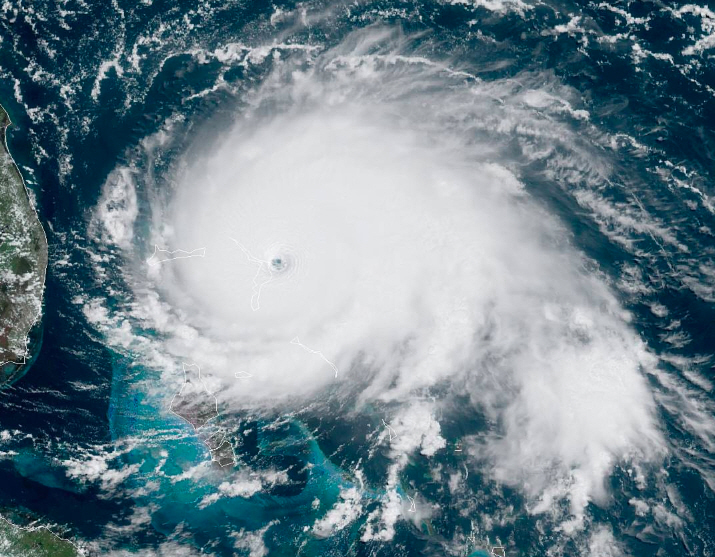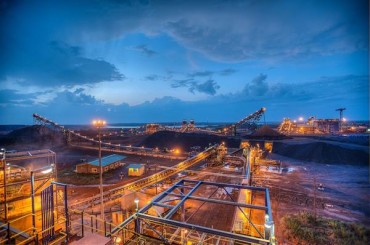BOSTON, Sept. 6 (Korea Bizwire) — Catastrophe risk modeling firm AIR Worldwide estimates that industry insured losses resulting from Hurricane Dorian’s impact to the Caribbean will range from USD 1.5 billion to USD 3 billion. AIR Worldwide is a Verisk (Nasdaq:VRSK) business.
According to AIR, Hurricane Dorian made landfall on St. Thomas on August 28 as a Category 1 hurricane. Dorian then tracked through and out of the Virgin Islands. Favorable conditions in the Caribbean Sea and Lesser Antilles fueled Dorian’s development, resulting in rapid intensification into a major Category 4 hurricane on August 31. Further intensification occurred, and Dorian reached Category 5 intensity on September 1, becoming the strongest hurricane to affect the northwestern Bahamas in the modern record.
Dorian made landfall on Great Abaco Island on September 1, with maximum sustained winds of 185 mph and a minimum central pressure of 911 mb—ultimately bottoming out at 910 mb a few hours later. After achieving its peak intensity during landfall, Dorian’s forward speed decreased. It reached Grand Bahama Island on September 2, where it effectively stalled for nearly a day. Dorian began to drift northwestward on September 3, slowly gaining forward speed as it moved away from the Bahamas toward Florida but weakening on its way. The storm was a Category 2 hurricane off the eastern coast of Florida on September 3 and 4 as it continued northward. Dorian will have significant impacts along the North and South Carolina coasts, but should weaken in response to increasing vertical wind shear.
Due to Dorian’s track, much of the Caribbean experienced little or no damage outside of the Bahamas. However, in the Bahamas, Grand Bahama and Abaco Island were devastated by Hurricane Dorian; buildings were destroyed, roofs were torn off, trees were felled, streets and homes were flooded, and cars, boats, and debris were strewn everywhere.
AIR’s modeled insured loss estimates for the Caribbean include:
- Damage to onshore residential, commercial, and industrial properties and their contents, as well as automobiles
- Time element coverage (additional living expenses for residential properties and business interruption for commercial properties that experience physical loss from both direct and indirect sources)
- Storm surge (implicitly accounted for in the wind damage functions)
AIR’s modeled insured loss estimates for the Caribbean do not include:
- Loss to offshore properties, pleasure boats, and marine craft (losses for boats inside a building may be estimated if their replacement value is included as contents)
- Losses to infrastructure
- Losses from hazardous waste cleanup, vandalism, or civil commotion whether directly or indirectly caused by the event
- Demand surge
- Losses resulting from the compromise of existing defenses (e.g., levees)
- Losses to uninsured properties
- Other non-modeled losses, including loss adjustment expenses
About AIR Worldwide
AIR Worldwide (AIR) provides risk modeling solutions that make individuals, businesses, and society more resilient to extreme events. In 1987, AIR Worldwide founded the catastrophe modeling industry and today models the risk from natural catastrophes, terrorism, pandemics, casualty catastrophes, and cyber incidents. Insurance, reinsurance, financial, corporate, and government clients rely on AIR’s advanced science, software, and consulting services for catastrophe risk management, insurance-linked securities, longevity modeling, site-specific engineering analyses, and agricultural risk management. AIR Worldwide, a Verisk (Nasdaq:VRSK) business, is headquartered in Boston, with additional offices in North America, Europe, and Asia. For more information, please visit www.air-worldwide.com.
For more information, contact:
Kevin Long
AIR Worldwide
+1-617-267-6645
klong@air-worldwide.com
Source: AIR Worldwide via GLOBE NEWSWIRE








